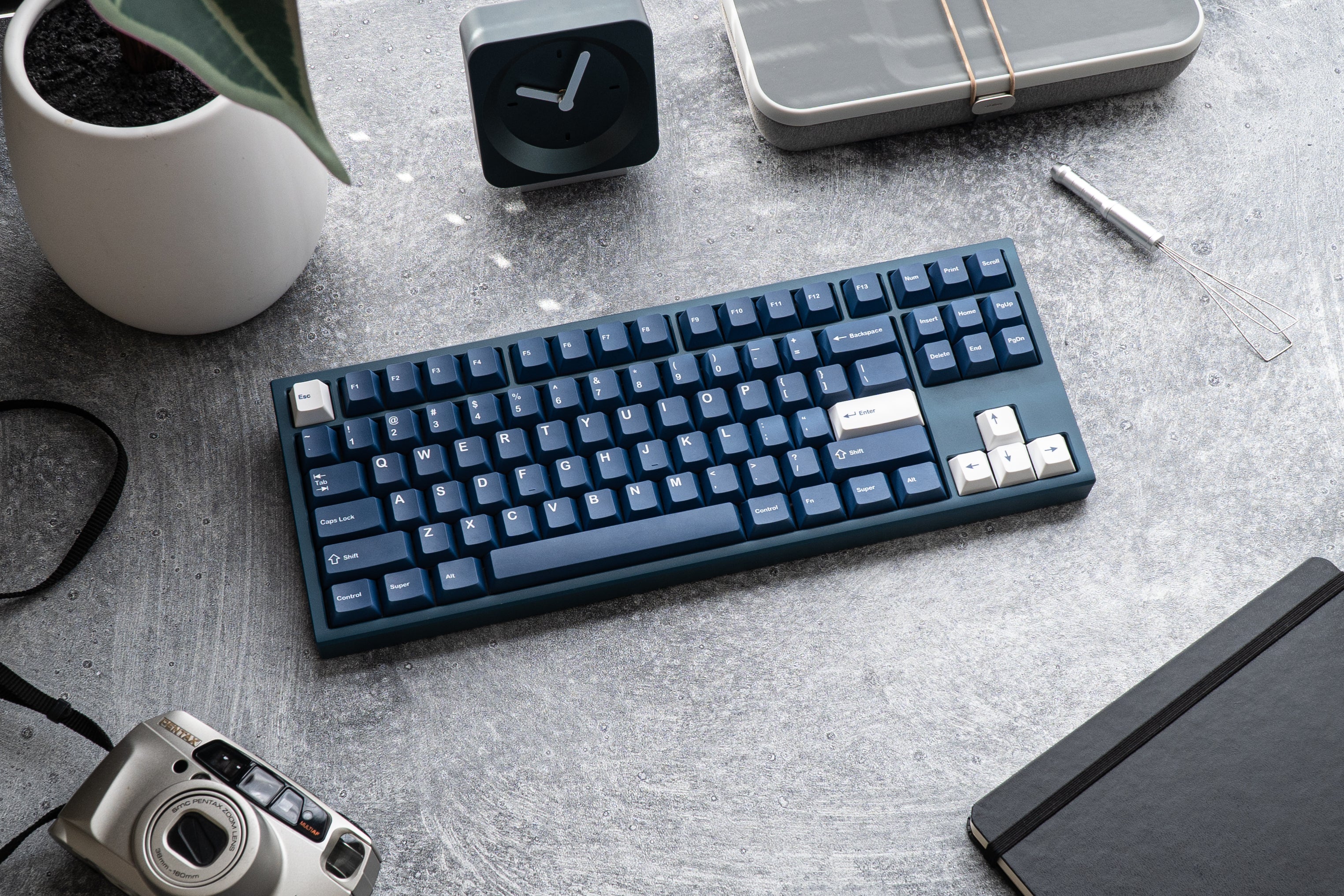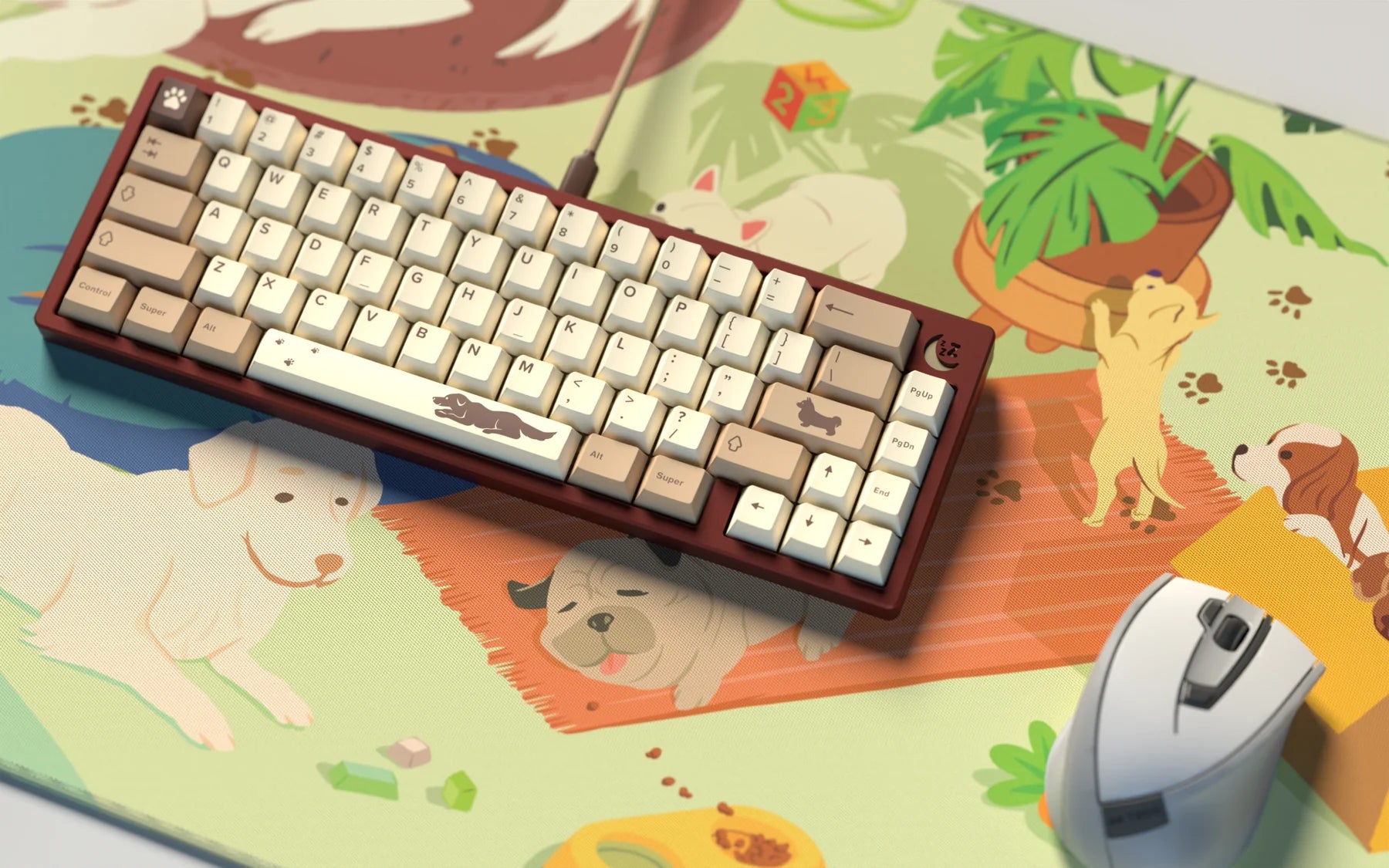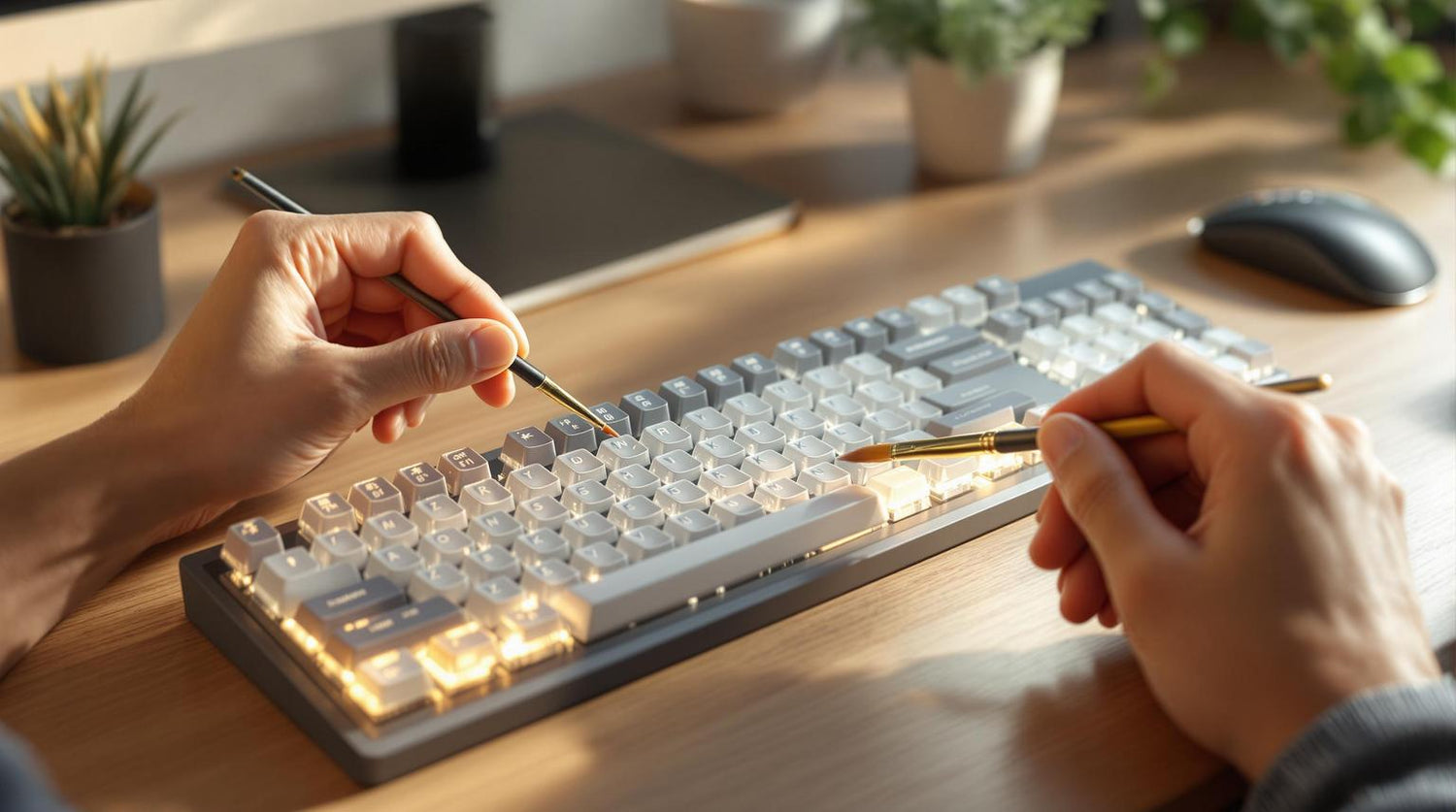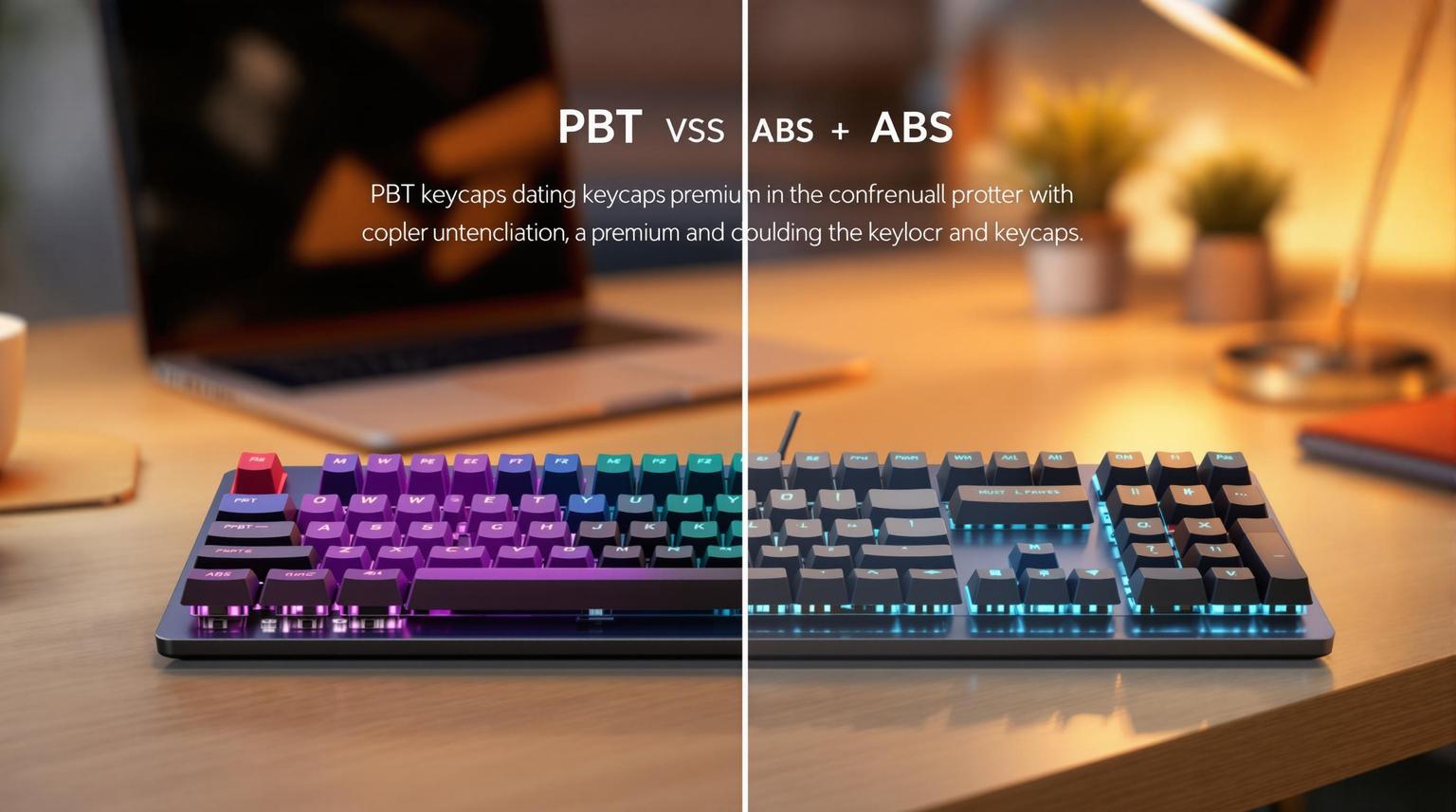Lubing your mechanical keyboard switches can make typing smoother, quieter, and more enjoyable. It reduces friction, eliminates spring noise, and improves consistency. Here's the quick process:
- Tools You Need: A switch opener (like the KFA Switch Opener, $19.00), Krytox 205g0 lube ($7.95), fine-tip brush (size 00 or smaller), switch puller, precision tweezers, and a clean workspace.
-
Steps:
- Remove keycaps and switches (use a switch puller for hot-swappable keyboards; desolder if necessary for soldered ones).
- Open each switch with a switch opener.
- Apply a thin layer of lubricant to the stem, spring, and housing (avoid tactile bump areas for tactile switches).
- Reassemble the switches and reinstall them on the keyboard.
Pro Tip: Start with one switch to practice. Use a light touch - too much lube can make switches feel sticky. Skip lubing clicky switches as it can ruin their sound.
This process takes time but can transform your typing experience. Ready to dive in? Let's get started!
Lube Every Type of Mechanical Keyboard Switch! Tactile ...
Required Tools and Supplies
Having the proper tools makes lubing mechanical keyboard switches easier, safer, and more precise.
KFA Switch Opener
The KFA Switch Opener is specifically designed to open Cherry MX‑style and Kailh‑style switches without causing damage. Made from aluminum and priced at $19.00, it features precision-cut slots that securely hold switch housings. Its ergonomic design ensures the process is both quick and safe.
Choosing the Right Lube
Selecting the correct lubricant is key to achieving the typing feel and sound you want.
- Krytox 205g0: A thicker lubricant, perfect for linear switches. It reduces friction and spring noise, providing smooth and consistent keystrokes. Available starting at $7.95.
When applying lube, use it sparingly. Adding too much can lead to issues, and removing excess requires fully disassembling and cleaning the switches.
Other Required Tools
Besides a switch opener and lubricant, you'll need these tools to get started:
| Tool | Purpose | Features to Look For |
|---|---|---|
| Switch Puller | Removing switches from the keyboard | Ensure compatibility with your PCB mount type |
| Fine-tip Brush | Applying lubricant | Use a size 00 or smaller paintbrush |
| Precision Tweezers | Handling small parts | Anti-static tweezers are ideal |
| Storage Container | Organizing switch components | Compartments for springs, stems, and housings |
| Work Surface | Setting up a workspace | Choose a clean, well-lit area |
For added convenience, consider using a switch lubing station. These stations keep your switches organized, with slots for different parts, and make the process more efficient - especially when working with many switches.
Once you've gathered your tools, set up your workspace so you're ready to begin lubing.
Before You Start
Workspace Setup
Set up your workspace in a well-lit, roomy area. Use a clean desk mat or a soft cloth to protect your surfaces and keep small parts from rolling away.
| Zone | Purpose |
|---|---|
| Disassembly | Open switches and organize parts |
| Lubing Station | Apply lubricant under good lighting |
| Parts Storage | Keep springs, stems, and housings sorted |
| Assembly | Rebuild switches |
Once your workspace is ready, the next step is to identify your keyboard type.
Check Your Keyboard Type
Before removing switches, figure out if your keyboard is hot-swappable or soldered.
For hot-swappable keyboards:
- Check for PCB socket holes and straight switch pins.
- Take a photo of your keyboard layout for reference.
For soldered keyboards:
- Desoldering requires specific tools and experience.
- If you're not familiar with soldering, consider getting help from a professional.
- Set aside extra time if desoldering is necessary.
After confirming your keyboard type, decide which switches to lube for the best results.
Which Switches to Lube
Not all switches benefit from lubing. Focus on switches that can show noticeable improvement:
Good candidates for lubing:
- Linear switches that feel scratchy.
- Tactile switches with spring noise.
- Switches that feel inconsistent across the board.
Avoid lubing:
- Clicky switches, as it can reduce their clicking sound.
- Switches that already have factory-applied lubricant.
Start with 5–10 switches to practice your technique. Lubing an entire keyboard usually takes 1–2 hours, so plan your time accordingly.
sbb-itb-3cb9615
Lubing Process Steps
Once your workspace is set up and switches are chosen, you can start lubing.
Taking Apart the Keyboard
Use a keycap puller to remove the keycaps. Keep your reference photo handy for reassembly, and organize the keycaps in their layout order.
For hot-swappable keyboards, remove the switches with a switch puller by squeezing the tabs and pulling upward. If your keyboard is soldered, it’s best to consult a professional for switch removal.
Opening the Switch
Place each switch into the KFA Switch Opener, ensuring proper alignment. Push down firmly until you hear a click, which separates the housings. Carefully remove and organize the following parts:
- Top housing
- Stem
- Spring
Keep everything sorted to avoid mixing or losing components.
Applying Lubricant
Follow these steps to apply lubricant to the switch components:
- Bottom Housing: Lubricate the side rails (where the stem slides) and the center shaft. For tactile switches, avoid the copper leaf.
- Spring: Apply lubricant to both ends. Alternatively, you can use the bag lubing method - place the springs in a plastic bag with some lubricant and shake gently.
- Stem: Lubricate all four sides and the inner shaft. For tactile switches, avoid lubricating the legs.
- Top Housing: Apply lubricant to the rails where the stem makes contact.
Putting Switches Back Together
Reassemble the switch by placing the spring into the bottom housing, setting the stem in the correct position, and aligning the top housing until it snaps into place.
Test each switch by pressing it several times. The movement should feel smooth and free of any sticking.
Rebuilding the Keyboard
After all switches are reassembled, start rebuilding your keyboard. Align the switch pins with the PCB holes and press firmly into place. Use a keyboard testing tool to confirm each switch works before reinstalling the keycaps.
| Component | Common Issues | Fixes |
|---|---|---|
| Switch Pins | Bent pins | Straighten them before inserting |
| Housing Assembly | Not fully closed | Double-check alignment and press |
| Spring Installation | Misaligned or off-center | Ensure the spring is centered |
| Stem Orientation | Incorrect placement | Match stem legs with the guides |
Switch Type Guidelines
After taking apart your switches, use the right lubricants in the right places to improve how they work.
Linear Switch Tips
Linear switches perform better with proper lubrication, ensuring smooth keystrokes. For these, Krytox GPL 205 Grade 0 is a great choice (check the 'Choosing the Right Lube' section for details). Here's where and how to lube:
| Switch Component | How to Lubricate |
|---|---|
| Switch Stem | Apply a thin, even coat on all four sides and a light layer inside. |
| Springs | Use a light coat or try batch lubing for efficiency. |
| Upper & Lower Housing | Lightly lube the contact points where the stem slides. |
Stick to thin, even layers. Too much lubricant can attract dust and increase resistance, which defeats the purpose.
Tactile Switch Tips
Tactile switches need a careful touch to keep their bump feedback intact. Use a thinner lubricant like Tribosys 3203. This helps reduce scratchiness and pinging sounds without dulling the tactile feel. Focus on:
- Lightly lubing the springs.
- Lubricating the sliding surfaces of the housing.
- Avoiding the tactile bump area to preserve the feedback.
Clicky Switch Warning
Don’t lube clicky switches! Their click mechanism depends on precise contact between parts. Adding lubricant can disrupt this and cause performance problems.
Tips for First-Time Lubing
Less is More
Use a thin, even layer of lubricant - too much can make switches feel sluggish and unresponsive.
Here’s a quick guide to help you apply the right amount:
| Switch Part | Amount of Lubricant | Signs of Over-lubing |
|---|---|---|
| Switch stem | A barely visible, thin film | Sticky stem or slow return |
| Housing rails | Just one light brush stroke | Pooling lubricant in corners |
| Springs | A faint coating, almost unnoticeable | Dripping lubricant when compressed |
Once you’ve got the hang of it, always test your technique on a single switch to avoid wasting time or materials.
Start with One Switch
Begin with just one switch. If it feels mushy or sluggish, you’ve likely used too much lubricant. Adjust your approach before moving on to the rest.
Use the Right Tools
Having the proper tools makes all the difference. For disassembly, the KFA Switch Opener works perfectly without risking damage. Avoid using tools like flathead screwdrivers, which can crack housings or break tabs.
For applying lubricant, go with a size 00 or smaller brush. This ensures precise application and minimizes the chance of excess buildup. Larger brushes can lead to uneven or overly thick layers.
Conclusion
Lubing mechanical keyboard switches can transform your typing experience. It helps create smoother keystrokes, reduces friction noise, and improves the overall sound.
The key is applying a thin, even layer of lubricant and using the right tools. With proper care, your keyboard will feel smoother, sound better, and respond more effectively.
Though it may seem tricky at first, taking your time and paying attention to detail can lead to excellent results. Plus, it can help extend the life of your keyboard while making it more enjoyable to use.



![[Pre-Order] Autumn Leaves PBT Keycaps - KeebsForAll](http://keebsforall.com/cdn/shop/products/DSC09732.jpg?v=1676148273)






Leave a comment
This site is protected by hCaptcha and the hCaptcha Privacy Policy and Terms of Service apply.